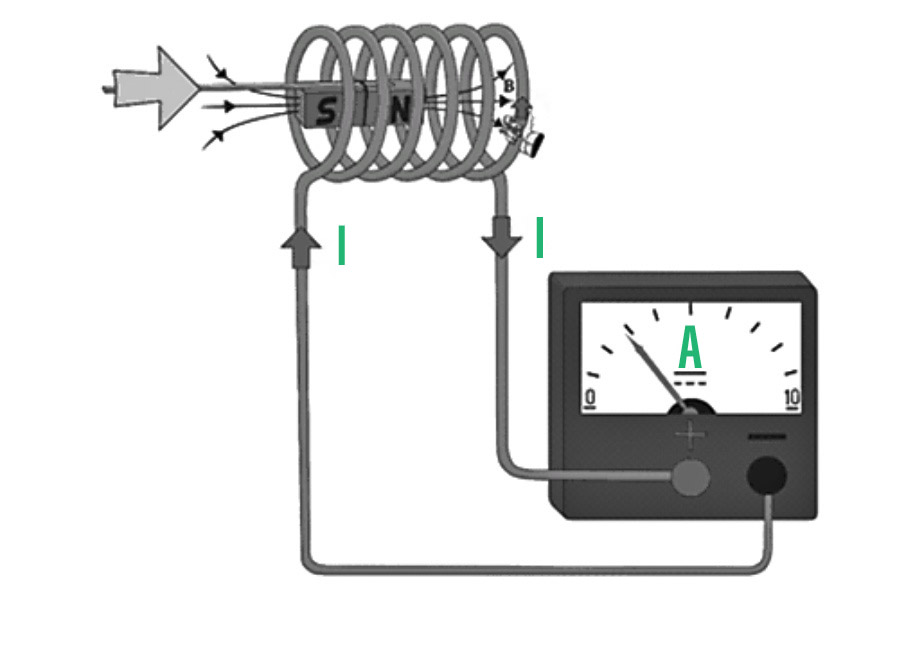交流发电机——原理、结构、工作、应用
变化的磁通量在导体中产生电压或电流,这称为电磁感应。当通过移动磁铁改变螺线管的磁通量时,就会发生这种情况。
如果磁铁不动,则不会在电线上产生电压(静电势差)。根据迈克尔法拉第的说法,如果磁场在不断变化并(保持)运动,同时不断地朝相反的方向(有规律地改变方向),它将产生电压(因此产生交流电)。
发电机
A generator is a mechanical device that converts mechanical energy into electrical energy. The electricity generated at various power plants is produced by the generators installed there. When a coil spins in a magnetic field or moves relative to a magnet, it generates an electromotive force (emf) or potential difference.
旋转线圈需要机械能,随后将其转换为电能。感应电动势通过线圈控制感应电流的流动,随后将其路由到我们的房屋并供我们使用。电动势是由一种称为电磁感应的现象引起的。
发电机原理
发电机的运行是基于电磁感应的思想。电磁感应现象是指通过改变连接到电路的磁通量在电路中产生电流。

通过特定区域的磁力线的总数称为磁通量。相对于磁铁移动线圈会改变与线圈相关的磁通量,从而在线圈中产生电动势。
Faraday established two laws that govern electromagnetic induction. These are their names:
- When the amount of magnetic flux linked to a circuit changes, an emf is formed. The induced emf persists for as long as the magnetic flux varies.
- In a circuit, the amplitude of induced emf is exactly proportional to the rate of change of magnetic flux coupled with the circuit.
有几种方法可以在线圈中创建电动势,包括:
- 因为线圈和磁铁的相对速度。
- 由于线圈和载流导线的相对运动
- 通过改变靠近线圈的导体中的电流。
弗莱明右手定则可用于识别线圈中产生的感应电流的方向:“伸展右手的拇指、食指和中指,使它们相互垂直。食指指向磁场方向,拇指指向导体速度方向,中指指向感应电流方向。”

发电机的线圈在磁场中旋转以产生感应电流。产生的感应电流以每秒数千次的速度在幅度和方向上波动。交流电是这种能量 (AC) 的名称。
当发电机产生的电流方向或数量不变时,使用直流电。根据发电机产生的电流类型,我们有多种发电机。
发电机的类型:发电机同时产生交流电 (AC) 和直流电 (DC)。发电机根据此分类如下:
交流发电机
将机械能转化为电能的机器称为交流发电机。机械能通过蒸汽轮机、燃气轮机和内燃机提供给交流发电机。交流电压和电流形式的交流电是输出。
交流发电机原理
交流发电机根据法拉第电磁感应定律函数,即电动势(EMF 或电压)是在切割均匀磁场的载流导线中产生的。在静态磁场中旋转导电线圈或旋转包围固定导体的磁场都可以用来实现这一点。因为从静止的电枢线圈中提取感应交流电比从旋转的线圈中提取感应交流电更容易。
The EMF generated is determined by the number of armature coil turns, magnetic field intensity, and rotating field speed.
交流发电机的建设

交流发电机的建设
下面列出了每个交流发电机组件的作用。
- 场-场由导体线圈组成,这些线圈从源接收电力并产生磁通量。电枢被磁场中的磁通量切割,从而产生电压。该电压是交流发电机的输出电压。
- 电枢- 产生电压的交流发电机部分称为电枢。该组件主要由足以处理发电机满载电流的线圈组成。
- 原动机- 原动机是驱动交流发电机的部件。柴油机、蒸汽轮机或电动机都可以用作原动机。
- 转子- 转子是发电机的旋转部件。转子由发电机的原动机驱动。
- 定子 -交流发电机的定子是固定组件。为了减少涡流损耗,定子铁芯由钢合金或磁铁叠片组成。
- 滑环 - 滑环是一种电气连接器,用于将电力从交流发电机的转子传输到交流发电机的转子。它们主要用于将电力从固定设备传输到旋转设备。
交流发电机的工作
电枢的磁链在垂直于磁场的轴上在磁体的磁极之间旋转时不断变化。结果,电流流过检流计、滑环和电刷。检流计将其值从正变为负。这意味着检流计正在接收交流电。弗莱明右手定则可用于确定感应电流的方向。
Direct Current Generator (DC Generator): The current produced by this form of electric generator does not alter direction or amplitude. As a result, the frequency of DC is always zero.
交流发电机相对于直流发电机的优势
- 通过变压器,交流发电机可以简单地升压和降压。
- 由于升压功能,交流发电机中的传输链路尺寸更小。
- 交流发电机的损耗低于直流电机。
- 交流发电机比直流发电机小得多。
示例问题
问题1:交流电与直流电相比有哪些优势?
回答:
The benefits of AC over DC are as follows:
- With the aid of a transformer, AC may be obtained at any required voltage.
- Less electricity is wasted during transmission when utilising AC.
- AC machines are strong and long-lasting, requiring little maintenance.
问题2:发电机的工作原理是什么?
回答:
The electromagnetic induction principle governs the operation of an electric generator.
问题3:什么是换向器?
回答:
It is a device that links the armature of a DC generator to the external circuit and assists in maintaining the current direction in the external circuit. Every half-turn, it switches the connection of the armature ends to the ends of the external circuit.
问题四:什么是电磁感应?
回答:
The phenomenon of electromagnetic induction occurs when current is generated in a circuit by altering the magnetic flux associated with it.
问题5:什么是发电机?
回答:
A generator is a machine that transforms mechanical energy into electrical energy.
问题6:确定交流发电机感应电流方向的规则是什么?
回答:
Fleming’s Right Hand Rule is used to determine the direction of current created in an AC generator.